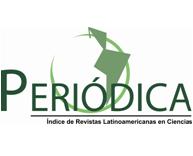Extracción supercrítica de aceite de cachaza
Keywords:
filter cake, supercritical extractionAbstract
The filter cake, is a solid waste that is removed from the final process of manufacture of cane sugar. Its composition contains approximately between 10 and 14 % of wax, oil and resin. As these compounds are in low concentrations is necessary to develop effective and selective methods for the recovery of the same commodity. The supercritical fluid extraction (ESC) is an efficient technique that is applied in the extraction of vegetable oils. The great interest shown by these fluids is due to exhibit properties intermediate between gases and liquids that take them suitable for use in extraction processes. The ESC is a mass transfer operation on conditions of temperature and pressure above the critical solvent. This work is carried out with supercritical CO2 extraction from filter cake. We investigate the influence of pressure, temperature and cosolvent on the yield and fatty acid composition. The temperatures and pressures have been selected: 35 to 55 ºC and 200 and 400 bar respectively. The co-solvent used was methanol to 15 %. The highest extraction yields are obtained when using co-solvent, but this increase in performance is attributed to the co-extraction of alcohols of high molecular weight, so the CO2 extraction is the most viable way to get that oil. These results are also compared with conventional extraction techniques.




















